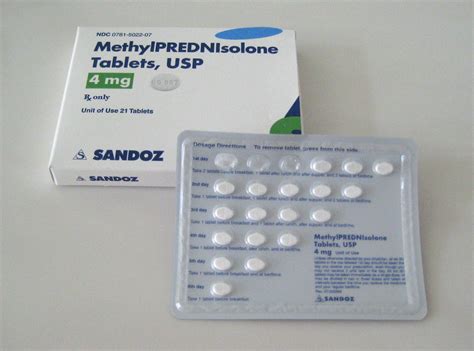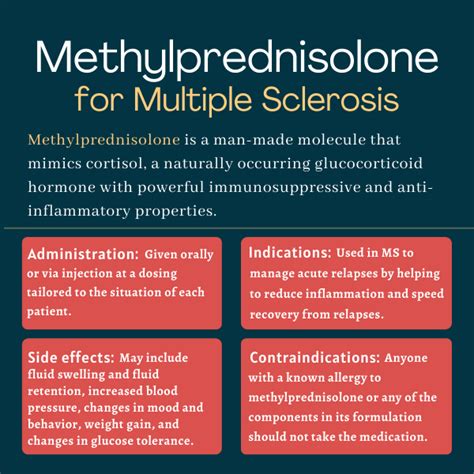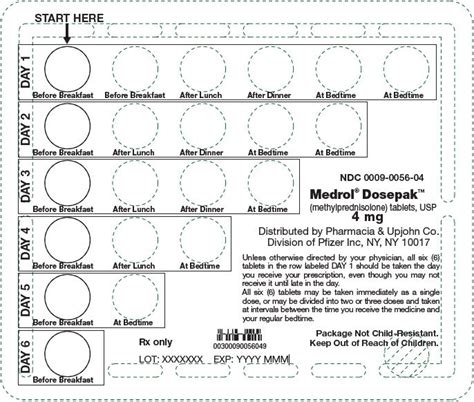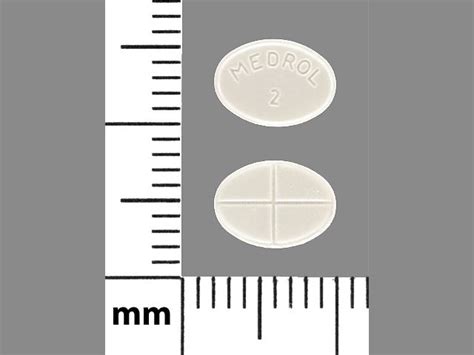Intro
Discover methylprednisolone uses, a corticosteroid for inflammation, allergy, and immune system disorders, including asthma, arthritis, and skin conditions, with benefits and side effects explained.
Methylprednisolone is a synthetic corticosteroid that has been widely used in the medical field for its potent anti-inflammatory and immunosuppressive properties. The importance of understanding the uses of methylprednisolone cannot be overstated, as it has become a crucial medication in the treatment of various conditions, ranging from allergic reactions to autoimmune diseases. In this article, we will delve into the world of methylprednisolone, exploring its benefits, working mechanisms, and practical applications, as well as providing statistical data and examples to illustrate its effectiveness.
The significance of methylprednisolone lies in its ability to mimic the effects of cortisol, a naturally occurring hormone produced by the adrenal gland. By suppressing the immune system and reducing inflammation, methylprednisolone has become a vital tool in the management of conditions such as asthma, rheumatoid arthritis, and lupus. Moreover, its versatility has led to its use in various medical specialties, including dermatology, gastroenterology, and oncology. As we navigate the complexities of methylprednisolone, it is essential to recognize its potential benefits and limitations, as well as its potential interactions with other medications.
The widespread use of methylprednisolone has sparked intense interest among medical professionals and patients alike, with many seeking to understand its mechanisms of action and potential side effects. By examining the scientific literature and consulting with experts in the field, we can gain a deeper understanding of the role of methylprednisolone in modern medicine. Whether you are a healthcare professional or simply seeking to learn more about this medication, this article aims to provide a comprehensive overview of methylprednisolone uses, benefits, and applications, as well as its potential risks and limitations.
Methylprednisolone Mechanism of Action

Pharmacokinetics and Pharmacodynamics
The pharmacokinetics of methylprednisolone involve its absorption, distribution, metabolism, and excretion. After oral administration, methylprednisolone is rapidly absorbed into the bloodstream, where it binds to plasma proteins and is distributed to various tissues. The medication is then metabolized by the liver and excreted in the urine. The pharmacodynamics of methylprednisolone, on the other hand, involve its mechanisms of action, including the suppression of inflammation and immune responses. By understanding the pharmacokinetics and pharmacodynamics of methylprednisolone, healthcare professionals can optimize its use and minimize potential side effects.Methylprednisolone Uses and Applications

Benefits and Advantages
The benefits and advantages of methylprednisolone include: * Rapid onset of action: Methylprednisolone has a rapid onset of action, providing quick relief from symptoms like pain, swelling, and inflammation. * High efficacy: The medication is highly effective in reducing inflammation and suppressing immune responses, making it a valuable treatment option for various conditions. * Versatility: Methylprednisolone can be administered orally, intravenously, or intramuscularly, making it a versatile treatment option for different patient populations. * Cost-effective: Compared to other corticosteroids, methylprednisolone is relatively cost-effective, making it a more accessible treatment option for patients.Methylprednisolone Side Effects and Interactions

Contraindications and Precautions
Methylprednisolone is contraindicated in patients with: * Active infections: The medication can worsen active infections, such as tuberculosis and fungal infections. * Peptic ulcers: Methylprednisolone can exacerbate peptic ulcers, leading to bleeding and perforation. * Glaucoma: The medication can increase intraocular pressure, worsening glaucoma. * Pregnancy and breastfeeding: Methylprednisolone should be used with caution in pregnant and breastfeeding women, as it can affect fetal development and infant growth.Methylprednisolone Dosage and Administration

Monitoring and Follow-up
Patients taking methylprednisolone require regular monitoring and follow-up to minimize potential side effects and optimize treatment outcomes. This includes: * Regular blood tests: To monitor blood cell counts, liver function, and electrolyte levels. * Blood pressure monitoring: To detect potential increases in blood pressure. * Weight monitoring: To detect potential weight gain. * Symptom monitoring: To assess the effectiveness of treatment and adjust the dosage as needed.Methylprednisolone Interactions with Other Medications

Managing Interactions
To manage interactions between methylprednisolone and other medications, healthcare professionals should: * Monitor patients closely: For signs of adverse interactions, such as bleeding, hyperglycemia, or hypertension. * Adjust dosages: As needed to minimize potential interactions. * Choose alternative medications: When possible, to minimize potential interactions.What is methylprednisolone used for?
+Methylprednisolone is used to treat various conditions, including allergic reactions, autoimmune diseases, inflammatory conditions, and cancer.
What are the common side effects of methylprednisolone?
+Common side effects of methylprednisolone include weight gain, mood changes, sleep disturbances, and increased risk of infections.
Can methylprednisolone be used in pregnant and breastfeeding women?
+Methylprednisolone should be used with caution in pregnant and breastfeeding women, as it can affect fetal development and infant growth.
How long does it take for methylprednisolone to start working?
+Methylprednisolone has a rapid onset of action, providing quick relief from symptoms like pain, swelling, and inflammation.
Can methylprednisolone be used in combination with other medications?
+Methylprednisolone can interact with other medications, so it's essential to monitor patients closely and adjust dosages as needed.
In conclusion, methylprednisolone is a versatile and effective medication that has become a crucial tool in the management of various conditions. By understanding its mechanisms of action, benefits, and limitations, healthcare professionals can optimize its use and minimize potential side effects. As research continues to uncover the complexities of methylprednisolone, it is essential to stay up-to-date with the latest developments and guidelines. We invite you to share your thoughts and experiences with methylprednisolone, and to explore the many resources available for patients and healthcare professionals alike. Whether you are seeking to learn more about this medication or simply looking for support and guidance, we hope that this article has provided a comprehensive and informative overview of methylprednisolone uses, benefits, and applications.
